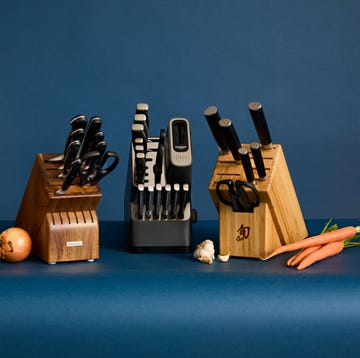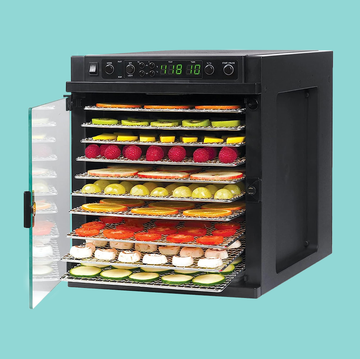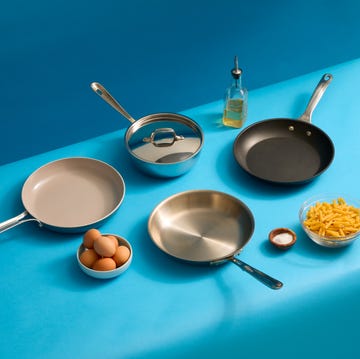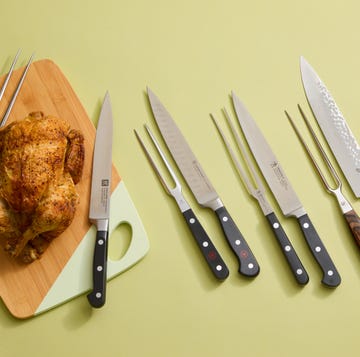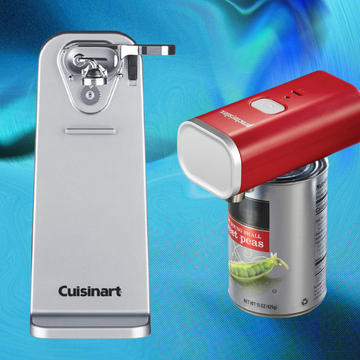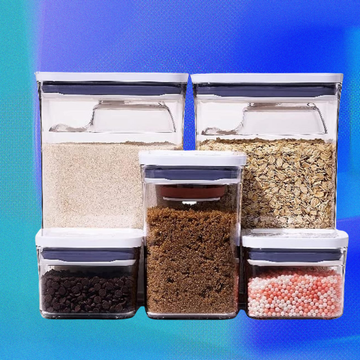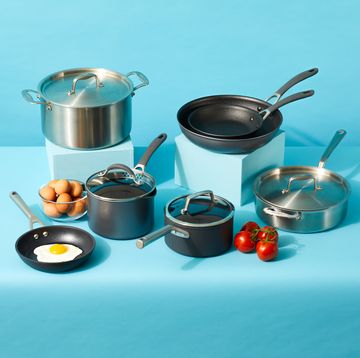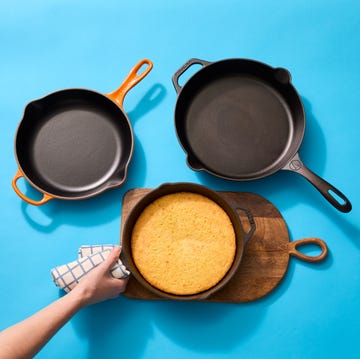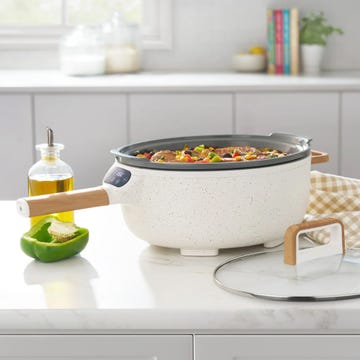Cast iron cookware is a true kitchen hero. When seasoned and maintained properly, a cast iron skillet can be non-stick; it's also ultra-durable and high-heat resistant. It's our go-to for everything from hearty frittatas and roast chicken to skillet cookies, sticky buns and perfectly caramelized vegetables — basically, most of our favorite dishes. But there's one category of ingredients that gives us pause when using our beloved cast-iron pans: acids.
Vinegars, citrus fruits, wine and tomatoes — anything below a 7 on the pH scale — can potentially strip away your skillet’s hard-earned seasoning and make your favorite lemon chicken or pasta sauce taste, well, kinda off.
So does this mean you should always reach for another pan when cooking dishes like tomato-braised chicken or seafood paella? Not necessarily! You'll find plenty of Good Housekeeping Test Kitchen recipes made in a cast iron skillet that call for tomatoes and wine. To clear up the confusion, I asked cast iron experts to break down exactly what happens when acid meets cast iron. From how to keep your seasoning safe to how (and whether) you can fix any potential damage, here’s everything you need to simmer and deglaze with confidence.
What happens when you put acid in a cast-iron pan?
Cast iron is a reactive metal, which means that it can chemically interact with acidic foods. When you add something acidic to your cast iron skillet or pan, a tiny amount of metal may leach into your food. While harmless, that leaching can impart a slightly tinny taste to your food — though that’s most likely the result of an improperly seasoned skillet. “The seasoning layer creates a natural, durable barrier between the food and the iron underneath,” explains Rachel Longenecker, Customer Service Manager at Lancaster Cast Iron.
Ultimately, whether or not to use acids in cast iron is up to your personal preference and comfort level. “I actually don’t love deglazing my [cast iron] pan or making pan sauces with it,” says Good Housekeeping Institute Kitchen Appliance and Innovation Lab Director Nicole Papantoniou. She will occasionally use acidic ingredients, like lemon slices or grape tomatoes, though not if she's looking for a more delicate taste.
How to keep your pan protected
The best defense is a strong offense (read: a well-seasoned skillet). You should always make sure your pan is well-seasoned before going in with the lemon juice or white wine. “We usually recommend holding off on super acidic ingredients during your first few uses,” says Longenecker. “This gives your skillet time to build up a solid seasoning base, which helps protect it long-term.”
Additionally, consider keeping the cook time under 45 minutes when working with acidic recipes. This can help further minimize the risk of damaged seasoning or leaching, per the cast iron experts at Lodge.
What if you do manage to strip your pan’s seasoning?
Don’t panic! It's not the end of the world (or your skillet). “It doesn’t mean you broke it or ruined anything,” says Longenecker. Cast iron cookware is famously tough and forgiving — there's a reason it's typically treated like an heirloom, passed down from generation to generation. If you notice food sticking more than usual or see raw metal peeking through, it's a sign your pan needs a little TLC.
Cleaning and re-seasoning should work to restore your skillet's protective layer. Also remember that your seasoning will continue to develop over time — particularly if you cook with plenty of fatty foods.
The bottom line
Yes, you can cook acidic foods in your cast iron pan — as long as it's well-seasoned — but, you may want to consider skipping it in certain scenarios, like if something is super saucy. The best part of a cast iron skillet, though, is how it can always bounce back like a true kitchen hero.
Nicole (she/her) is the director of the Good Housekeeping Institute's Kitchen Appliances and Innovation Lab, where she has overseen content and testing related to kitchen and cooking appliances, tools and gear since 2019. She’s an experienced product tester and recipe creator, trained in classic culinary arts and culinary nutrition. She has worked in test kitchens for small kitchen appliance brands and national magazines, including Family Circle and Ladies’ Home Journal.

